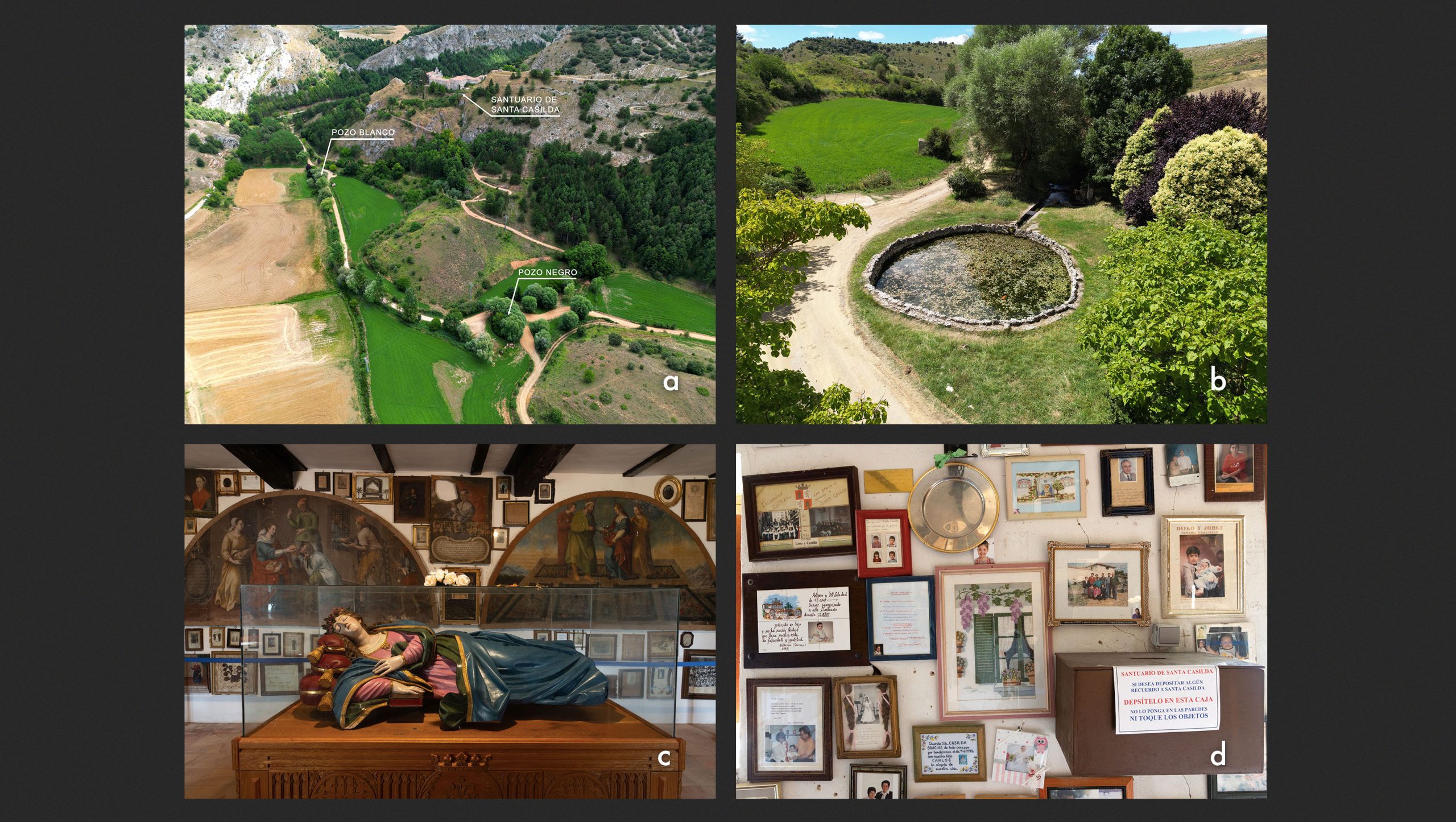Santa Casilda Holy Wells (Salinillas de la Bureba, Burgos)
IV.The Collective Imaginaries
Santa Casilda’s life is enveloped in the blur of legend, and the few actual details of her life that endure today are too few to allow of any detailed historical reconstruction. That she lived at some point in the 11th century, we can say with some confidence. The first records of her life that survive are from the 14th century, and we learn here that she was the daughter of a Muslim king from Toledo. Her compassion for some imprisoned Christians there led the maid to defy her father’s wishes, and she dispensed charity to them in secret. According to the legend, one day her father surprised her as she was taking food to the prisoners. A miracle saved her from discovery, as the bread she carried in her skirts was turned into flowers.
Later, Casilda fell ill from “fluxions of the blood” (abnormal vaginal bleeding) and, after all medical treatments had failed, her father permitted that she be taken to the sanctuary devoted to San Vicente Mártir, near Briviesca (Burgos) where, according to Christian beliefs, the waters possessed healing powers. After a miraculous recovery, Casilda elected to receive baptism and settled there, living as a hermit near its two springs, each with its own fountain and well, or pond. She is said to have lived into old age, although the date of her death is unknown. She was buried in the chapel of San Vicente, which later became the sanctuary of Santa Casilda on 21 August 1750. The artist Diego de Siloé made a new urn, where her remains were transferred, in the image of the saint in a recumbent posture.
The saint probably suffered either from some hormonal or functional disorder, such as dysmenorrhoea, polycystic ovary syndrome or chronic anovulation, or from a uterine disease like uterine fibroids, endometrial or cervical polyps, endometrial hyperplasia, endometrial cancer or cancer of the cervix. Although of course we cannot be more specific, the legend stipulates that she was cured of her ailment after washing in the pool known as the “black” well. It is said that any who follow her example will be healed of any malady whatever, but especially of “fluxions of the blood”, since popular belief transformed her into protectress from women’s diseases as well as guardian of fertility. Those wishing for progeny may cast a pebble or piece of clay tile from the embankment into the “white” pool situated on the same pathway as the “black” pool, and the princess, saint and hermit, will grant their wish. There is a hall in the sanctuary holding the offerings made by the thankful, either for their healing or for their fecundity (this latter taking the form of succour either in conceiving, in assisting a pregnancy to go to term, or in ensuring a safe delivery).
In 1724 Juan Cantón Salazar y Setién, canon of Burgos Cathedral, published The Marvellous Instrument of Charity and Miracles of Toledo. Life and Miracles of Virgin Santa Casilda. Here he recounted how the saint recovered her physical and spiritual health after bathing in the miraculous pool, and explained the difference between the two wells:
What is said of the white, or crystalline, pool, that it has the power to heal fluxions of the blood, is not true, for it has only the virtue of curing sterility, and here they come to cast pebbles to this end, and in this way many women achieved what for many years had been denied them. As regards fluxions of the blood, and other ailments, it is the Pool next to the Meadows the one with the power to cure these; and the Women bring this about by bathing in it, or by washing their smocks. The first to be healed of fluxions of the blood was our Saint herself, from bathing therein… (p. 224).
As the centuries rolled by, these waters accrued legendary properties. The first piece of the legend was the sacred mark of San Vicente, who conferred upon them their magical powers. Later, beginning in the 15th century, the shining figure of Santa Casilda took up this heritage once more, and she made the pools her own. Popular tradition, that safest of repositories for marvels and miracles, kept the stories of the two saints alive. But it was above all the growing renown of the miracles of Santa Casilda that, like a constant rumbling, gradually became identified with these wellsprings. Even today, a quarter of the way into the 21st century, people still come to cast their pebble or piece of tile and then, later, return to leave an offering in thanks, confident that the child they have now finally been blessed with was the result of the saint’s successful intercession on their behalf. [M.ª Pilar Panero García.]

